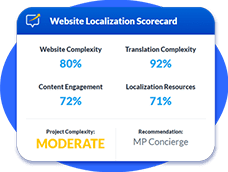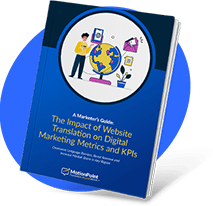Video  Oct 24, 2018
Oct 24, 2018
How Our Proxy Solution Works
To fully understand how MotionPoint’s proxy-based solution localizes websites and other digital content, let’s start by looking at how your website operates.
When customers visit your website, their interactions—from the URLs they type to the links they click—send requests to your web servers.
Your system assembles web pages based on these requests, pulling content from databases, templates, third-party sources, graphics and more. The pages are then instantly sent to the visitor’s device.
Learn how the turn-key, proxy-based approach compares to other translation technologies.
A proxy-based approach
With MotionPoint’s solution, translated websites operate the same way, but MotionPoint’s server sits between the end-user and your server. When the user accesses a page on your localized website, their request goes to MotionPoint’s proxy technology, which sends the page request on to your website’s back-end.
Read more about how our proxy works.
- Your server delivers content in its origin language, like it always does.
- MotionPoint’s system examines the page’s original content…
- …and leverages its structured code to preserve its look, feel and functionality.
- It replaces the original content with human-translated content that’s already stored in your translation memory.
- It then merges the translated content with the page’s original code and structure…
- …and the translated webpage is then passed on to the end-user.
This process happens instantly, delivering a seamless in-language online experience.
Your global customers can effortlessly interact—and transact—with your brand in the languages they prefer.
Discover the ease and benefits of the proxy translation solution.
Categories: Website Translation, Marketer, Streamline Operations, Optimize Performance, Video





Share: